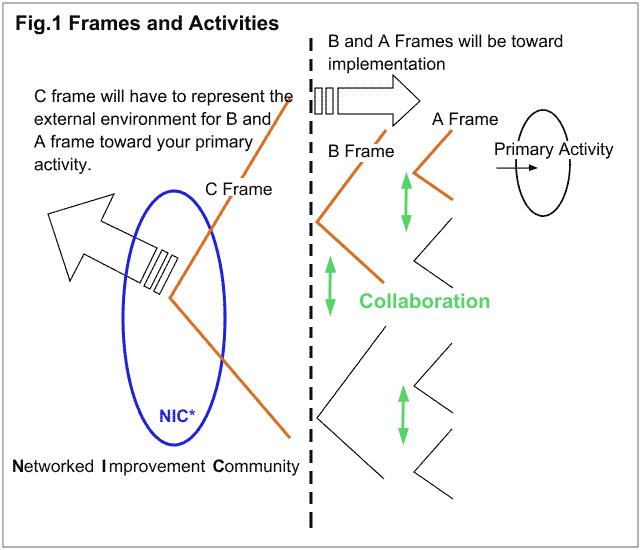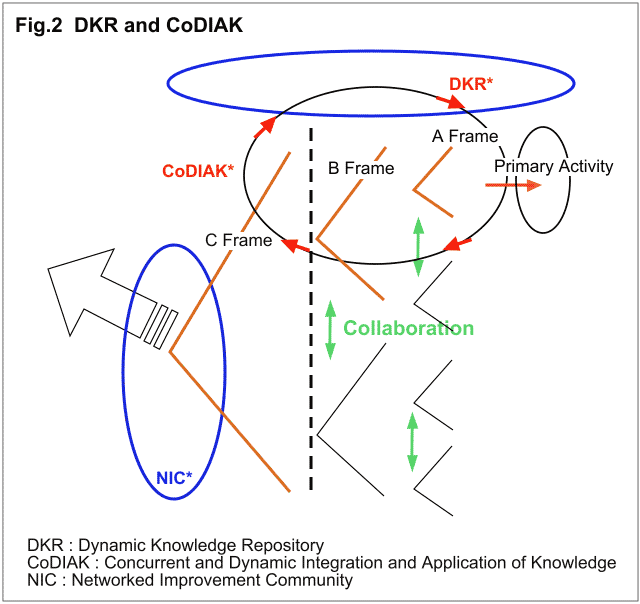
This url is to examine how D Engelbart's ABC model is interpreted to be adopted in Japanese corporate and social culture. According to Doug Engelbart's definition of ABC model,
When we do any kind of activity in an organized way, we have a frame of reference in our mind to justify our activity. Let's call it 'Frame for actions'. If you re-write the above definition using this Frame concept, it becomes;
Now it is clear that A activity is bound by the A Frame and as far as we try to improve things under it, what we can improve is limited. If we want to improve the primary activity beyond our A frame, we need to change our Frame A itself. The B frame is for this purpose and looks at the external environment of A Frame from one level higher position and make necessary modifications to the existing A Frame. The same is true for the C frame. It look at the external environment of the existing B frame from a higher position and make necessary modifications to the existing B Frame. A simple example of ABC Frame model;
should give you a feel for this frame structure. If you have a very new idea at your primary activity level affecting the divisional and the corporate structure, you will need to have B and C frames to be changed so that they enable you to implement your new idea at the A level.
In this re-definition of ABC model using the frame of thought, the mission of your primary activity will be to attain the objective of Frame B and C through your A Frame. Since the scope of your B Frame is larger than your A Frame, you will have organizational interests to cooperate with other A's to attain your B frame. The same is true for the C Frame. Your B frame has organizational interests to attain your C Frame with other B's.
How to choose the B and C Frames will be important and needs inteligence in actual implementation, but in practice, A and B will be toward implementation of your primary task using C frame as a leverage, and C will have to reflect external environment surrounding your B Frame( organizations can not exist without adding value to the society, etc). The Fig1 illustrates this relationship;

As shown in Fig1, the C frame represents your B and A frame's external environment which we need to assume a constant change in the networked era. The monitoring of this changing environment will be done through Networked Improvement Community at C level and the results will be fed into B frame.
The market reaction through your A and B activities will be fed back to B and C frames dynamically and necessary enhancements and changes will be made as needed. The knowledge developed in this process will be accumulated as DKR. DKR will be used to enhance your A and B activities dynamically. This concurrent and dynamic application of Knowledge toward your primary activity is called CoDIAK.

Communication infrastructure in the society has changed the way an organization adds value to the society. In the traditional society where communication was basically taken by printing materials, telephones, limited digital communication and mass media, collecting, maintaining and sharing information for attaining the given mission was a costly task. The most effective way to do so was to form a bigger organization and maintain the collective IQ within the organizational hierarchy. In networked society where information sharing and communication cost is not an issue, a smaller organization working in collaboration with others will often work advantageous in keeping in touch with the fast changing world. It will mean we need to adjust our corporate C frame to the networked era which will in turn adjust B and A frames.
This URL has been developed by the help of Eiichiro Kamiya